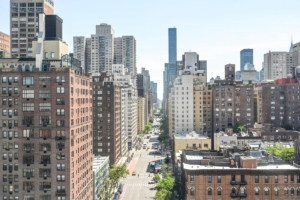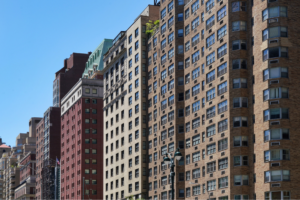While the colder months are known to trigger a home shopping slowdown, this winter will likely be even slower than usual in the Brooklyn and Manhattan housing markets, according to the October 2016 StreetEasy® Market Reports[i].
Manhattan resale prices, while still increasing, are growing at their slowest pace in five years, and fewer homes went into contract than in October 2015 in both boroughs. Two of the most expensive submarkets – North Brooklyn and Downtown Manhattan – had price declines, reflecting an ongoing luxury market downturn. In North Brooklyn in particular, an area which includes Williamsburg, competition is notably softening.
[tableau server=”public.tableau.com” workbook=”priceIndices” view=”StreetEasyPriceIndex” tabs=”no” toolbar=”no” revert=”” refresh=”yes” linktarget=”” width=”600px” height=”820px”][/tableau]
“Approaching winter, high-end sellers are already cutting prices as they adjust to a more restrained market. Buyers looking in formerly ultra-competitive areas may find the ball is back in their court,” said StreetEasy economist Krishna Rao.
“In Williamsburg, it will be particularly interesting to see if price declines continue as the L-train closure approaches. For those who don’t mind dealing with restricted transit options over the next few years, this could present an opportunity for investment that will ultimately pay off.”
See below for more details about key themes from the October 2016 StreetEasy Market Reports.
Competition Eases in Brooklyn, Particularly in North Brooklyn Submarket
[tableau server=”public.tableau.com” workbook=”Oct2016competitivematrix” view=”Dashboard1″ tabs=”no” toolbar=”no” revert=”” refresh=”yes” linktarget=”” width=”600px” height=”720px”][/tableau]
- In October, Brooklyn’s median resale price grew 4 percent year-over-year to $566,283, the lowest appreciation in October since 2012.[ii].
- The number of pending sales, or homes that went into contract, fell 12.6 percent compared to this time last year, an even greater decline than recorded the year prior[iii].
- Median resale prices in the North Brooklyn submarket (Williamsburg, East Williamsburg, Greenpoint) declined 1.2 percent year-over-year to $864,969. It was the only submarket with price declines, as all other Brooklyn submarkets recorded median resale price increases above 4 percent.
- Overall competition in North Brooklyn was down from last year:
- The submarket had the highest share of price cuts among all other submarkets (44.3 percent).
- Sellers received 92 percent of their asking price, down from 99.6 percent in October of last year.
- Median time on market increased from 35 days to 88 days – more than double the median of any other Brooklyn submarket. Homes in Williamsburg took a median of 90 days to go into contract.
Price Growth, Contract Activity Slows in Manhattan
[tableau server=”public.tableau.com” workbook=”Oct2016pricechange” view=”priceYoYchange” tabs=”no” toolbar=”no” revert=”” refresh=”yes” linktarget=”” width=”600px” height=”770px”][/tableau]
- Manhattan’s median resale price increased 0.5 percent year-over-year to $982,042 – the slowest annual growth since February 2011.
- Similar to Brooklyn, fewer homes went into contract this October than in years past, with the number of pending sales dropping 16.2 percent year-over-year.
- Resale prices in the Downtown submarket, the borough’s most expensive submarket, declined 1.8 percent year-over-year to $1,197,844. By contrast, resale prices in Upper Manhattan grew 3.2 percent year-over-year, followed by Midtown (1.7 percent), the Upper West Side (1.0 percent) and Upper East Side (1.0 percent).
- Homes in the Downtown submarket took a median of 13 days longer to go into contract than this time last year, indicating increased hesitation among buyers.
[tableau server=”public.tableau.com” workbook=”October2016MarketOverview” view=”NeighborhoodData” tabs=”no” toolbar=”no” revert=”” refresh=”yes” linktarget=”” width=”600px” height=”870px”][/tableau]
[i] The StreetEasy Market Reports are a monthly overview of the Manhattan and Brooklyn sales and rental markets. Every three months, a quarterly analysis is published. The report data is aggregated from public recorded sales and listings data from real estate brokerages that provide comprehensive coverage of Manhattan and Brooklyn, with most metrics dating back to 1995 in Manhattan and 2005 in Brooklyn. The reports are compiled by the StreetEasy Research team. For more information, visit http://streeteasy.com/blog/market-reports/. StreetEasy tracks data for all five boroughs within New York City, but currently only produces reports for Manhattan and Brooklyn.
[ii] Methodology of StreetEasy’s Price Indices here: http://streeteasy.com/blog/methodology-streeteasy-price-indices/
[iii] “Pending sales” refers to the number of homes in contract at a given time.









